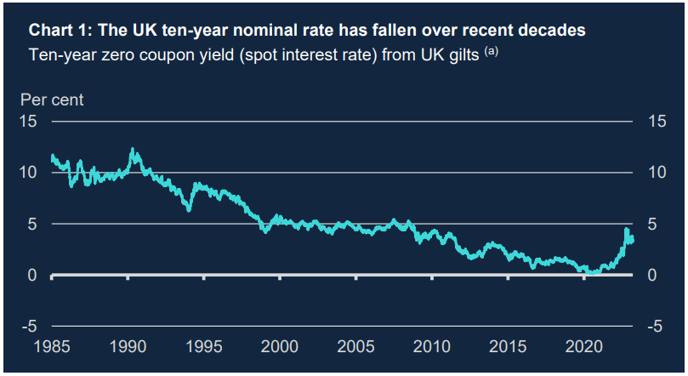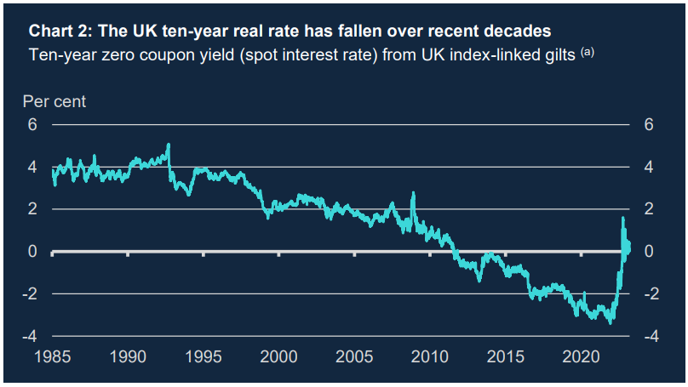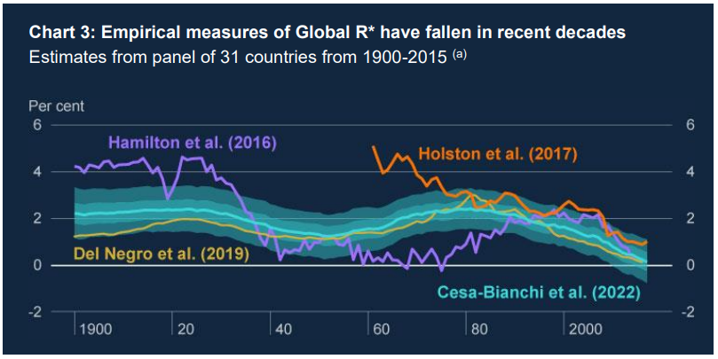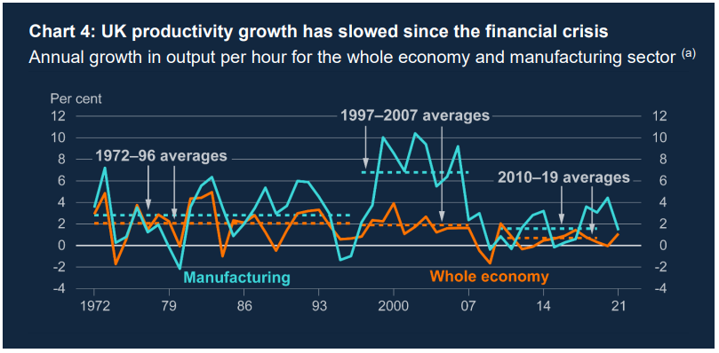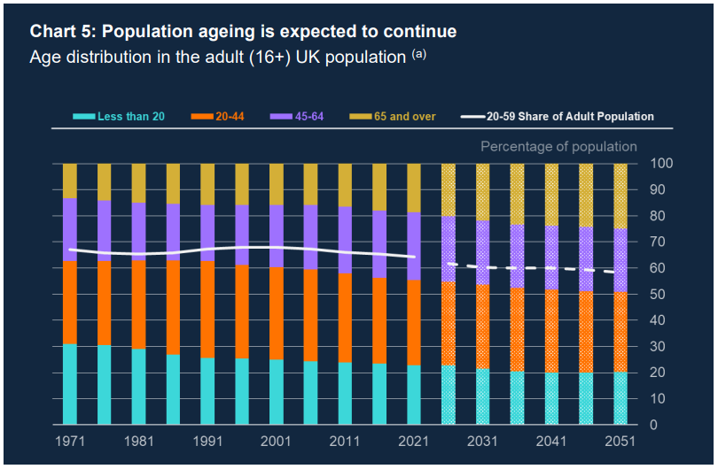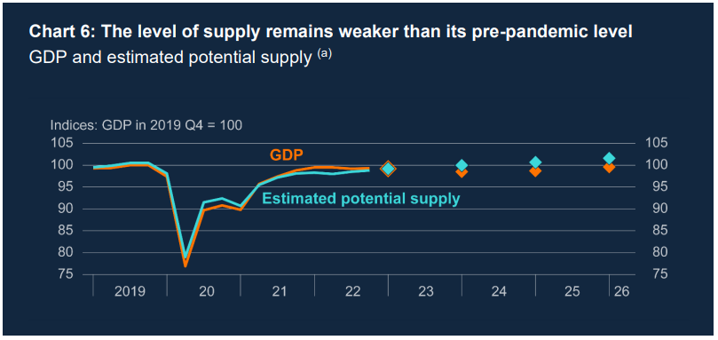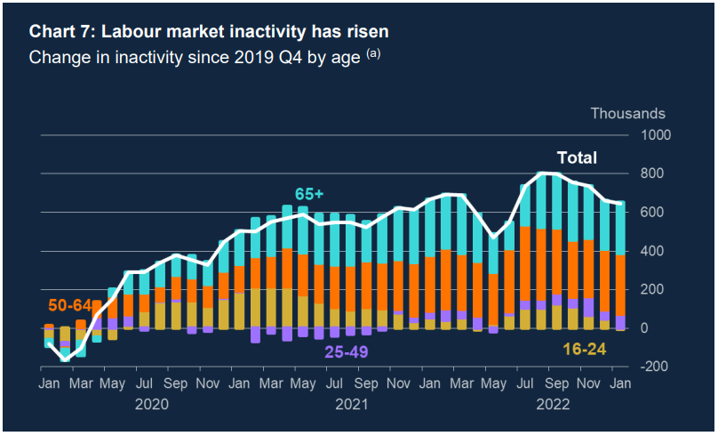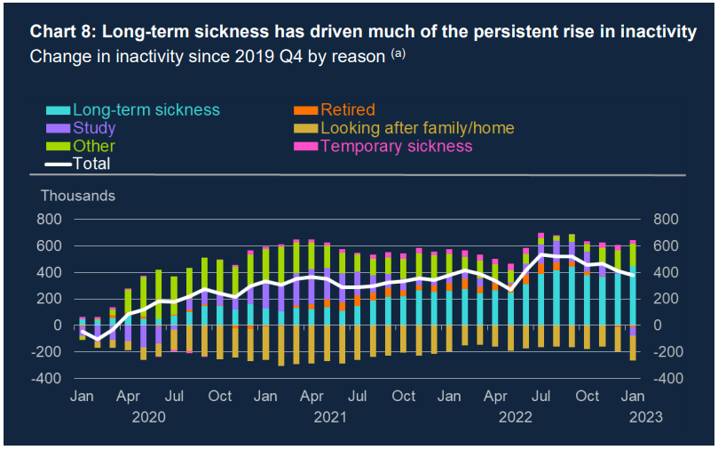

This is an edited transcript of the speech delivered by Andrew Bailey at the London School of Economics on 27 March 2023. The author is grateful to Ben Broadbent, Fabrizio Cadamagnani, Kieran Dent, Izzy Doughty, Marco Garofalo, Michael Goldby, Richard Harrison, Karen Jude, Tomas Key, Catherine L Mann, Katie Martin, Huw Pill, Dave Ramsden, Andrea Rosen, Martin Seneca, Bradley Speigner, Danny Walker and Laura Wallis for helpful comments and assistance, and to ChatGPT for its views on R*.
Monetary policy’s inability to influence supply has at times been taken to suggest that monetary policy has no effects on real economic activity at all. In classical economic theory, for example, monetary policy only affects nominal variables such as wages and prices, not real variables such as the level of production and employment. In this tradition, real business cycle theories have been developed in which supply side disturbances are the main drivers of real activity.
But overwhelming empirical evidence, and many years of practical experience, show that monetary policy affects economic activity and inflation through aggregate demand. In the New Keynesian models that have dominated monetary macroeconomics over the past three decades, monetary policy has real effects because market prices are sticky. So when nominal interest rates change, the real interest rates that determine real consumption and investment decisions change with them. And markets may operate with ‘excess supply’ or ‘excess demand’ for as long as it takes wages and prices to adjust to shifts in either demand or supply.
